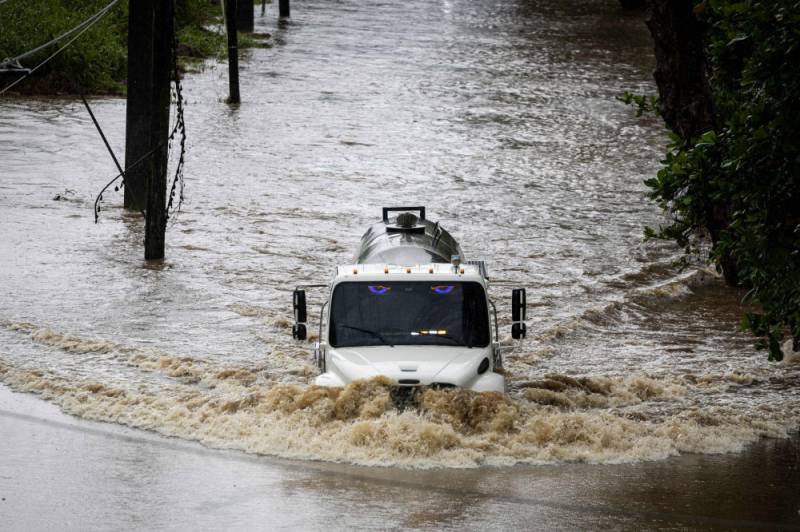WASHINGTON - Hurricane Erin restrengthened into a Category 4 storm late Sunday, with forecasters warning it is expected to intensify and grow in size in the coming days as it lashes Caribbean islands with heavy rains that could cause flash floods and landslides.
The first hurricane of what is expected to be a particularly intense Atlantic season, Erin briefly strengthened into a “catastrophic” Category 5 storm before its wind speeds weakened.
Forecasters do not currently expect it to make landfall along its expected course, but tropical storm warnings are in effect for the southeast Bahamas and Turks and Caicos Islands.
Hurricane Erin was located about 130 miles (205 kilometers) east of Grand Turk Island at 11:00 pm Atlantic Standard Time (Monday 0300 GMT), with maximum sustained winds of 130 miles (215 kilometers) per hour, according to the Miami-based National Hurricane Center (NHC). “The core of Erin is expected to pass to the east and northeast of the Turks and Caicos Islands and the southeastern Bahamas overnight into Monday,” the NHC said in its latest report. The North Carolina Outer Banks, Bermuda and the central Bahamas were advised to monitor Erin’s progress. Hurricane Erin had reached the highest level on the Saffir-Simpson scale just over 24 hours after becoming a Category 1 storm, a rapid intensification that scientists say has become more common due to global warming. It could drench isolated areas with as much as six inches (15 centimeters) of rain, the NHC said.
“Some additional strengthening is expected over the next 12 hours followed by gradual weakening,” the agency said.
“However, Erin is forecast to continue increasing in size and will remain a large and dangerous major hurricane through the middle of this week,” it added.
The NHC also warned of “locally considerable flash and urban flooding, along with landslides or mudslides.”








